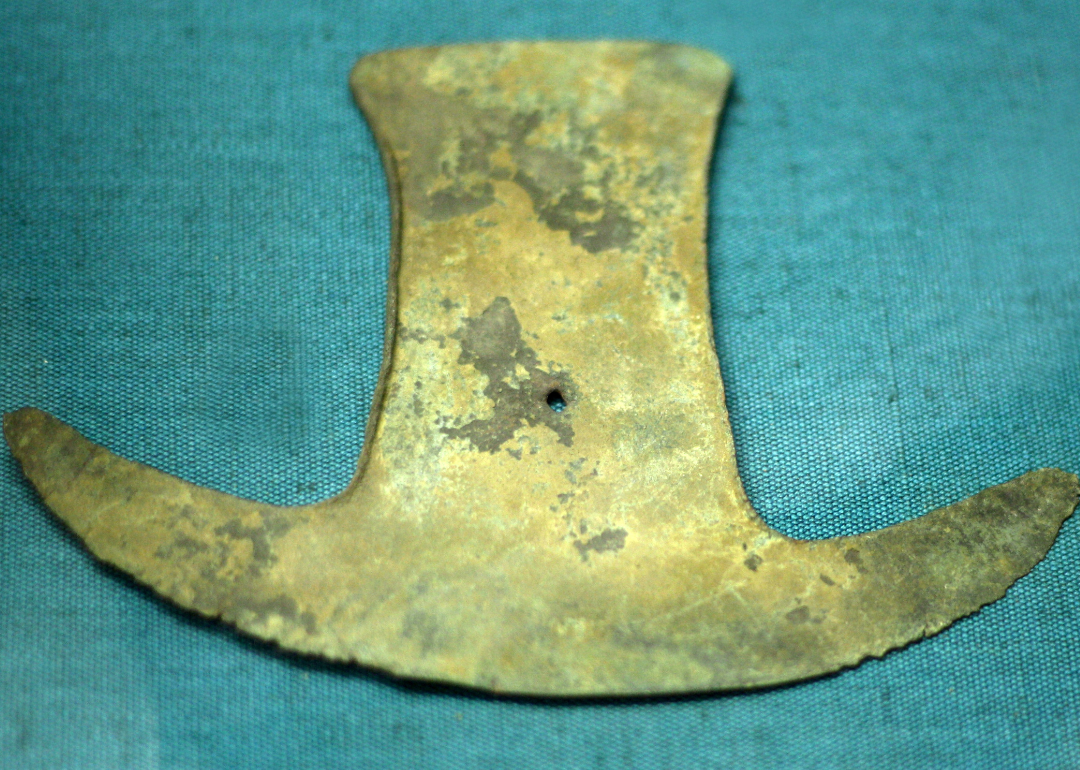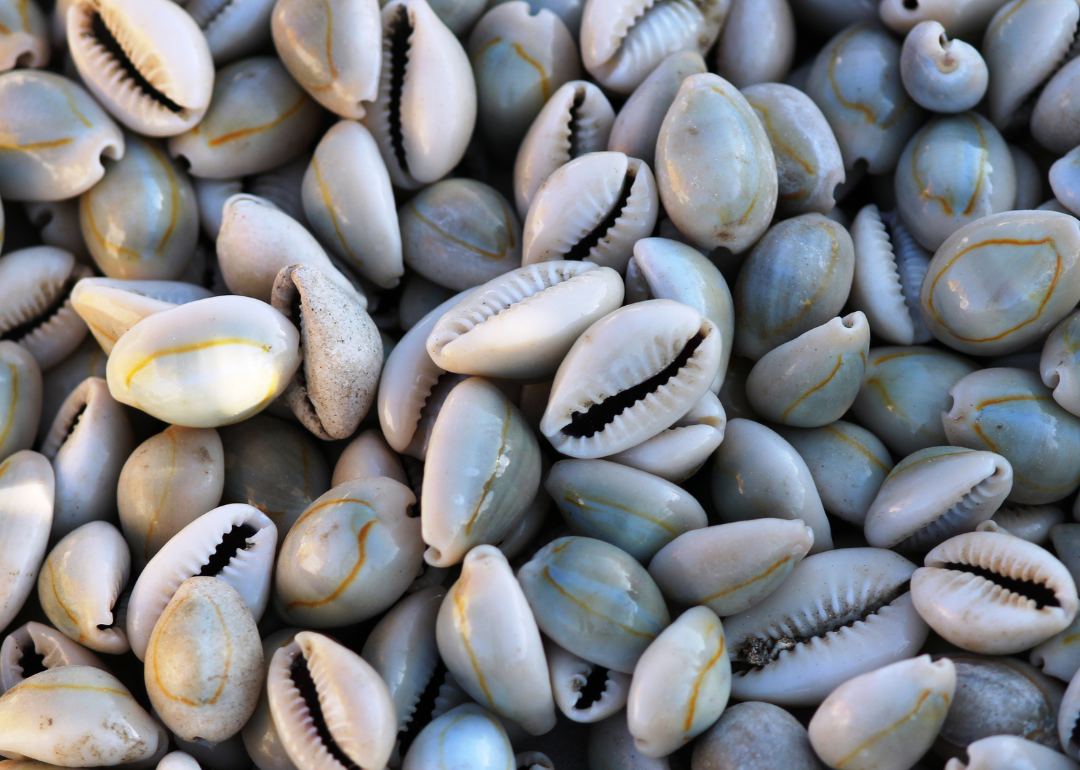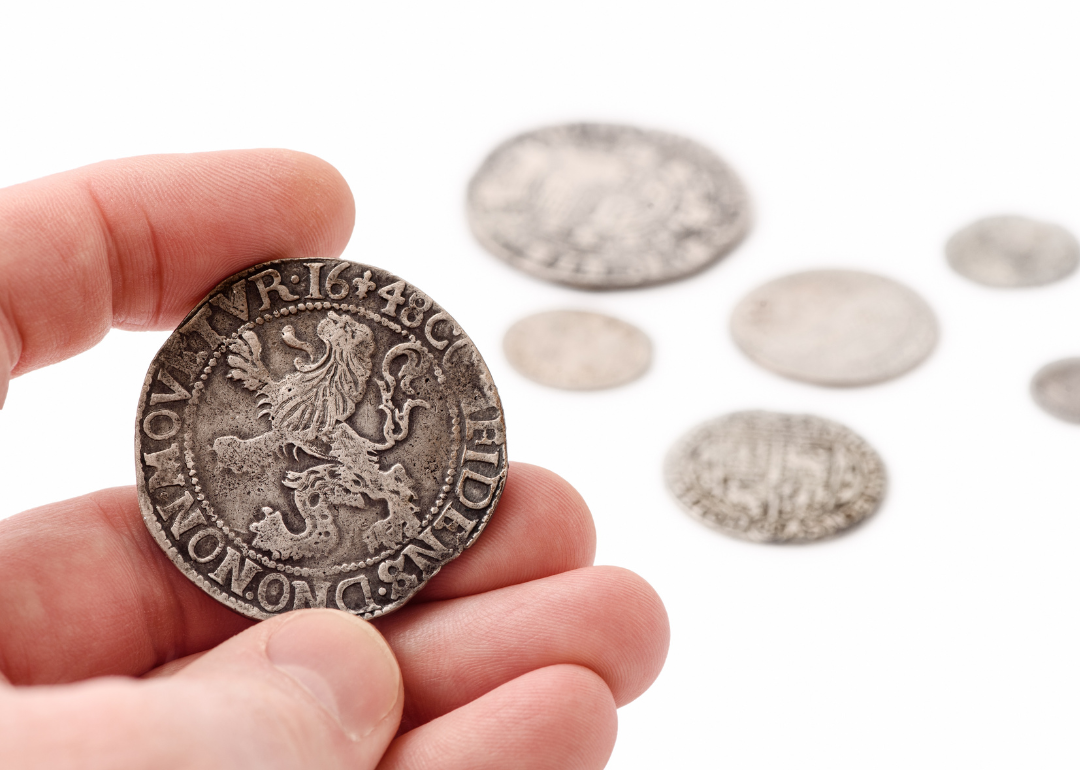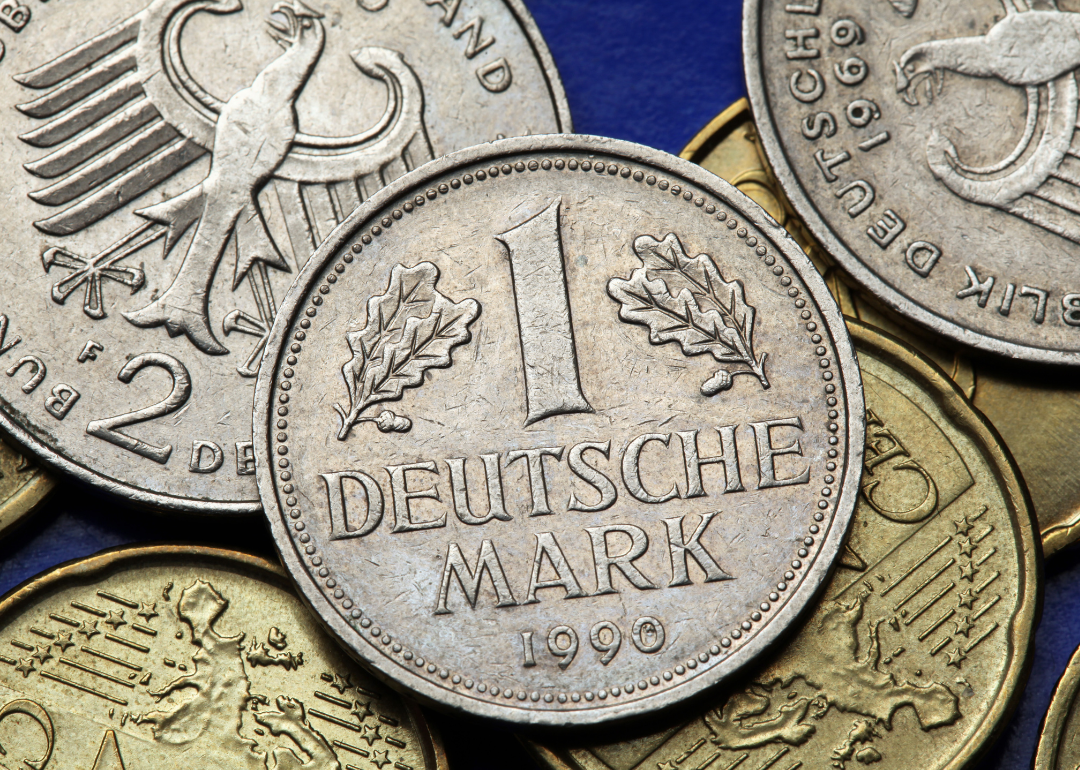9 currencies that no longer exist

DeAgostini // Getty Images
9 currencies that no longer exist
Men carrying an ancient stone coin on Yap Island.
Between mobile wallets and digital payments, the U.S. dollar seems like it’s falling more and more into disuse. In the U.S., about 4 out of 10 Americans say their typical week of purchases is cashless, according to the Pew Research Center. While many experts seem to agree that the paper U.S. dollar is not at immediate risk of becoming obsolete, other currencies around the world have gone the way of the dinosaurs throughout time.
Since the earliest civilization, trade has been crucial to human survival. It began with bartering, people trading goods or services with each other. Then, money came along, and its portability and sheer convenience solidified its use in different forms in different cultures. Currency allows people to trade even if they don’t each need a specific item or skill the other has. Instead, money can change hands—a measure of value that’s independent of what it’s paying for. Soon, money became as much of a political tool as it was a social tool. Governments could both create it and tax it, and societies could use it to move resources and develop alliances.
Because “money is technology,” as Jacob Goldstein, author of “Money: The True Story of a Made-Up Thing” puts it, currencies become antiquated and replaced with newer currencies. Currencies also collapse, become demonetized, and fall out of use.
SD Bullion scoured historical and numismatic resources to find nine currencies that no longer exist. Keep reading to learn more about them.
![]()

lego 19861111// Shutterwstock
Spade coins
Greek and Persian darics.
Time and place most recently used: 221 B.C.E.—China
The early spade coins—or spade money—were first issued in ancient China in the late seventh century or at the beginning of the sixth century B.C.E. Spade coins were produced in the form of large, metal agricultural tools rather than traditional coins. The currency was marked with a text, which indicated its value as a coin.
Nefer-nub or stater
Time and place most recently used: 50-60 C.E.—Egypt
The nefer-nub—which is literally translated as “fine gold” or “good gold”—was ancient Egypt’s first minted coin. Also called the gold stater, this coin was issued in 360 B.C.E., while the pharaoh Teos was in power. However, the nefer-nub was not used by the general public, but only by the pharaoh to compensate Greek mercenaries.
Leather
Time and place most recently used: Late 13th century—India
Leather was used as currency in ancient China. White deerskin was cut into 1-foot square pieces—decorated with vibrant and colorful edges—to use as money. Developed in 118 B.C.E., it is believed that this leather currency was the first type of banknote.

World History Archive/UIG via Getty images
Axe blades or hoe blades
Aztec copper axe blade.
Time and place most recently used: 16th century—Central and South America
Aztec hoes—also called axe money—were used as currency in central Mexico and some of Central America around 1500. In Mesoamerica, cacao seeds were also another common currency. The axe money currency was worth exactly 8,000 of these cacao seeds—making it highly valuable.

Heritage Art/Heritage Images via Getty Images
Pine tree shilling
Pair of pine tree shillings.
Time and place most recently used: Late 17th century—Massachusetts
When the Massachusetts Bay Colony experienced a coin shortage, Boston settlers John Hull and Robert Sanderson were permitted to establish a mint in 1652 to remedy the problem. The mint eventually struck the popular pine tree shilling, with the coin bearing an image of one of the colony’s main exports—pine trees. However, the currency was eventually discontinued after the mint was shut down by the English monarchy.

Canva
Cowrie shells
Group of cowrie shells.
Time and place most recently used: Late 19th century—Africa, Asia, Australia, Pacific Islands
First used as money in 1200 B.C.E., cowrie shells are created by mollusks and were abundant in certain areas of the Indian and Pacific oceans. Small, durable, and uniform in size, cowrie shells worked well as a form of currency. Though it was first used in China, the use of cowrie shells as currency eventually spread to other parts of the world.

evenfh // Shutterstock
Rai
Rai stones in Micronesia.
Time and place most recently used: Early 20th century—Yap islands, Micronesia
Located on the island of Yap in Micronesia are rai—huge stone disks used as money. Though the U.S. dollar is the common currency in Yap today, rai are still used as payment for important transactions such as land purchases. The stone money was actually not quarried on Yap but brought from another island, Palau. Many are so large they are merely left in place today, with ownership transferred by verbal agreement.

Volodymyr Zakharov // Shutterstock
Thaler
Hand holding silver thaler.
Time and place most recently used: 20th century—Austria
In 1518, a silver coin—called a thaler—was first minted in Joachimsthal in Bohemia. The coin was originally called Joachimsthaler, though it was shortened to simply “thaler.” The word “dollar” is an Anglicized version of the term “thaler.”

Vladimir Wrangel // Shutterstock
Deutsche mark
Deutsche mark coins.
Time and place most recently used: 2002—Germany
Various currencies called “mark” were used in Germany dating back to the 19th century. The Deutsche mark was initially adopted in 1948 as the legal currency of the Federal Republic of Germany (or West Germany). Eventually, it was the currency of the reunified German state and was known as a reliable currency central to Europe’s economy. But a later European currency became its downfall, as the Deutsche mark was replaced by the euro in 2002.
Story editing by Jeff Inglis. Copy editing by Tim Bruns.
This story originally appeared on SD Bullion and was produced and
distributed in partnership with Stacker Studio.